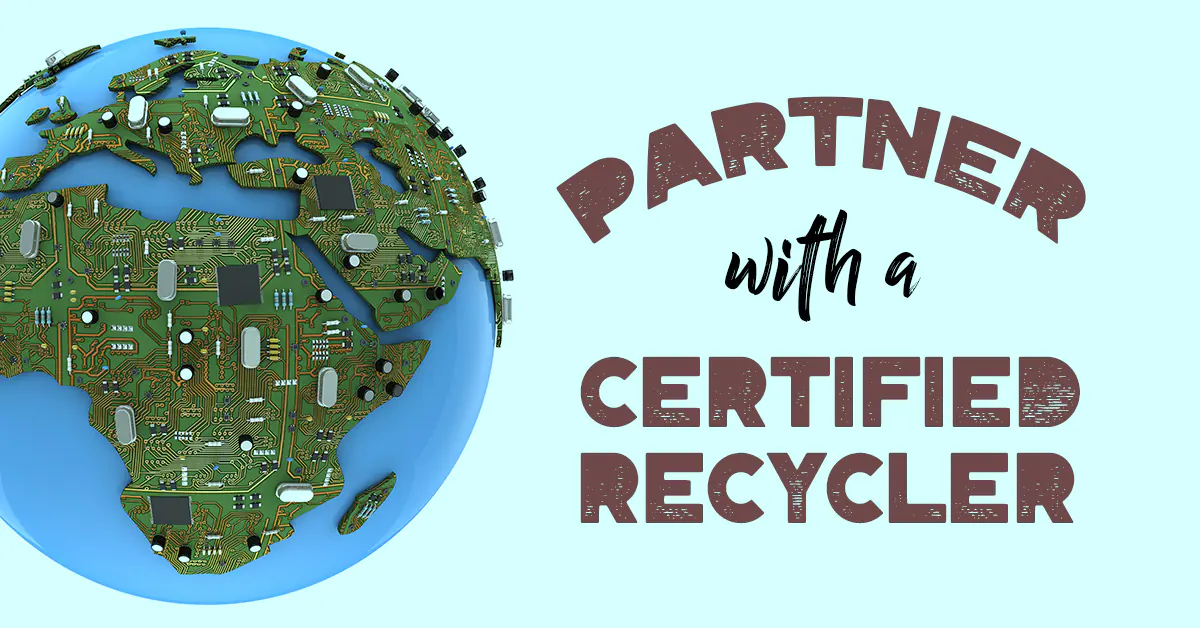
There are a number of concerns IT Managers consider when selecting an ITAD service provider. IT managers at mid- to large-size companies cite data breach from discarded computers as their number one concern when disposing of IT equipment. Environmental practices, and supporting reuse activities were also top priorities. The R2 Standard addresses all of these areas:
Data security:
By choosing an R2 certified ITAD vendor, IT managers can be confident their data is being securely managed. All R2 certified recyclers are required to sanitize, purge, or destroy data on hard drives and other data storage devices. The data destruction processes that each R2 certified recycler uses are reviewed and validated by an independent party. The Standard also requires that employees involved in data destruction receive appropriate training on a regular basis. And, R2 recyclers are required to have a security program in place that is appropriate for the equipment they handle and the customers they serve.
Environmental practices:
The R2 Standard strongly addresses the environmental impacts that electronics recycling can have if mismanaged. The standard identifies FMs, or materials that can pose environmental concern, and requires that these materials be managed to ensure environmental and worker safety. Downstream vendors handling Focus Materials must also employ the same key best practices as the R2 certified facility. And the standard prohibits the export of equipment and components containing Focus Materials unless the transaction is legal under both the export and import countries’ laws and the receiving facility adheres to the key best practices of the R2 Standard.
Under R2, clients can feel confident that the export of material for processing is being done safely, legally and ethically. To ensure exported electronic scrap ends up at state-of-the-art facilities, three key criteria need to be met. First, shipments of exported electronic scrap must be sent and received in accordance with the laws of the exporting and importing countries. Illegal shipments all too often end up causing serious harm to health and the environment in the worst of recycling and refurbishing operations. Second, all receiving facilities must be evaluated on a regular basis to ensure that they are employing best technologies and practices. Third, all equipment must be accurately characterized on the shipping manifest. Too often, e-scrap exports are characterized as “reusable” to avoid the added scrutiny and legal requirements that apply to “waste”. This creates a legal loophole which can allow scrap to be inappropriately sent to a facility that is not capable of safely handling it.
Through these requirements, the stakeholders that developed R2 achieve the goal of protecting vulnerable populations while supporting legal, safe, environmentally-sustainable, economic development in developing countries.
Reuse:
Recognizing the importance that reuse has, both environmentally and socially, the R2 Standard establishes a “reuse, recover, dispose” hierarchy. The Standard requires R2 certified recyclers to take all practical steps to direct properly functioning equipment and components for reuse unless a customer directs otherwise. In order to divert equipment for reuse, diagnostic testing must be performed to confirm that key functions of the unit are working properly. The R2 Standard has emerged as the third-party certification standard of choice for the reuse and refurbishing community.
The R2 Standard creates assurances for customers seeking ITAD services that stringent requirements are being followed in data security, environmental management, and reuse practices.


